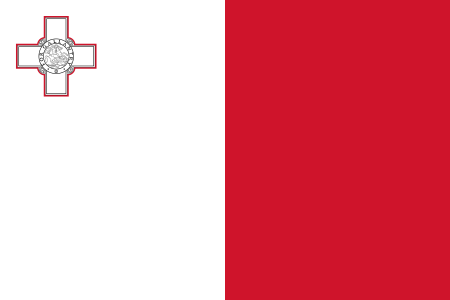Oroqen people
| |||||||||||||||||||||||||||
Read other articles:

Protein-coding gene in the species Homo sapiens SLC32A1IdentifiersAliasesSLC32A1, VGAT, VIAAT, solute carrier family 32 member 1External IDsOMIM: 616440 MGI: 1194488 HomoloGene: 56451 GeneCards: SLC32A1 Gene location (Human)Chr.Chromosome 20 (human)[1]Band20q11.23Start38,724,486 bp[1]End38,729,372 bp[1]Gene location (Mouse)Chr.Chromosome 2 (mouse)[2]Band2|2 H1Start158,452,687 bp[2]End158,457,668 bp[2]RNA expression patternBgeeHumanMouse (ortho…

Численность населения республики по данным Росстата составляет 4 003 016[1] чел. (2024). Татарстан занимает 8-е место по численности населения среди субъектов Российской Федерации[2]. Плотность населения — 59,00 чел./км² (2024). Городское население — 76,72[3] % (2022)…

Questa voce sull'argomento contee della Virginia è solo un abbozzo. Contribuisci a migliorarla secondo le convenzioni di Wikipedia. Contea di James CityconteaLocalizzazioneStato Stati Uniti Stato federato Virginia AmministrazioneCapoluogoWilliamsburg Data di istituzione1634 TerritorioCoordinatedel capoluogo37°18′36″N 76°46′12″W / 37.31°N 76.77°W37.31; -76.77 (Contea di James City)Coordinate: 37°18′36″N 76°46′12″W / 37.31°N …

Chronologies Données clés 1909 1910 1911 1912 1913 1914 1915Décennies :1880 1890 1900 1910 1920 1930 1940Siècles :XVIIIe XIXe XXe XXIe XXIIeMillénaires :-Ier Ier IIe IIIe Chronologies géographiques Afrique Afrique du Sud, Algérie, Angola, Bénin, Botswana, Burkina Faso, Burundi, Cameroun, Cap-Vert, République centrafricaine, Comores, République du Congo, République démocratique du Congo, Côte d'Ivoire, Djibouti, Égypte, …

2002 single by Atomic Kitten Be with YouSingle by Atomic Kittenfrom the album Feels So Good (Special Edition) and Ladies Night A-sideThe Last GoodbyeReleased25 November 2002 (2002-11-25)StudioMetropolis (London, England)GenreDance-popdiscoLength3:38LabelInnocentVirginSongwriter(s)Greg WilsonTracey CarmenMartin FosterJeff LynneProducer(s)Ash HowesMartin HarringtonAtomic Kitten singles chronology The Tide Is High (Get the Feeling) (2002) The Last Goodbye / Be with You (2002) Love Do…

Список персон, які керували Генеральною прокуратурою України з 1991 року. Див. також: Генеральний прокурор України Генеральні прокурори України № Час повноважень Портрет Ім'я 1 4 вересня 1991 — 21 жовтня 1993 Шишкін Віктор Іванович 2 21 жовтня 1993 — 19 жовтня 1995 Дацюк Владислав �…

العلاقات العراقية الميانمارية العراق ميانمار العراق ميانمار تعديل مصدري - تعديل العلاقات العراقية الميانمارية هي العلاقات الثنائية التي تجمع بين العراق وميانمار.[1][2][3][4][5] مقارنة بين البلدين هذه مقارنة عامة ومرجعية للدولتين: وجه المقا…

A minaudière from 1938 A minaudière is a women's fashion accessory, generally considered a jewellery piece, intended to substitute for an evening bag. A case with compartments, it allows storage for several items in a small space, such as a makeup compact, lipstick, watch, reading glasses, or keys.[1] The minaudière appeared during the 1930s. Its invention is attributed to Charles Arpels, of Van Cleef & Arpels, but many jewellers and haute couture designers have created their own …

У этого термина существуют и другие значения, см. Третье отделение (значения). Третье отделениерус. дореф. Третье отдѣленіе Страна Российская империя Создана 1826 Распущена (преобразована) 1880 Предшественник Тайная канцелярия Преемник Охранное отделение Здание штаба Отд�…

Australian Paralympic swimmer Paige Leonhardt2016 Australian Paralympic team portraitPersonal informationFull namePaige LeonhardtNationalityAustralia/CanadaBorn (2000-09-21) 21 September 2000 (age 23)NSW, AustraliaSportSportSwimmingClassificationsS14ClubYeronga Park Swimming ClubCollege teamCarmel College, Thornlands QLDCoachRobert Van Der Zant Medal record Women's paralympic swimming Representing Australia Paralympic Games 2020 Tokyo 100 m butterfly S14 World Para Swimming …

Astronomical event For other uses, see Lunar eclipse (disambiguation). This article needs additional citations for verification. Please help improve this article by adding citations to reliable sources. Unsourced material may be challenged and removed.Find sources: Lunar eclipse – news · newspapers · books · scholar · JSTOR (January 2023) (Learn how and when to remove this message) Latter phases of the partial lunar eclipse on 17 July 2019 taken from Glou…

Lija Il-Kunsill Lokali ta' Ħal LijaLocal councilLija Lambang kebesaranMotto: Suave Fructu Rubeo(With Tasty Fruits I Blossom)Country MaltaIslandMaltaBordersAttard, Balzan, Birkirkara, Iklin, Mosta, NaxxarPemerintahan • MayorIan Castaldi Paris (PN)Luas • Total1,1 km2 (4 sq mi)Populasi (March 2011) • Total2.967 • Kepadatan270/km2 (700/sq mi)DemonimLijan (m), Lijana (f), Lijani (pl)Zona waktuUTC+1 (CET) • …

This article has multiple issues. Please help improve it or discuss these issues on the talk page. (Learn how and when to remove these template messages) This article needs to be updated. Please help update this article to reflect recent events or newly available information. (April 2017) This article contains content that is written like an advertisement. Please help improve it by removing promotional content and inappropriate external links, and by adding encyclopedic content written from a ne…

رموز الأجرام السماوية مع نص باللغة الألمانية يعود طباعته إلى سنة 1850.[1] الرموز الفلكية هي مجموعة من الرموز المصورة والمجردة تستخدم لتمثيل الأجرام الفلكية لدى علماء الفلك. كان استخدام الرموز شائعاً في حضارات العالم القديم مثل البابليون والمصريون القدماء. عرف الإغريق من ب…

Map all coordinates using OpenStreetMap Download coordinates as: KML GPX (all coordinates) GPX (primary coordinates) GPX (secondary coordinates) Suburb of Brisbane, Queensland, AustraliaSpring HillBrisbane, QueenslandWickham Terrace, the main street of Spring HillSpring HillCoordinates27°27′34″S 153°01′34″E / 27.4594°S 153.0261°E / -27.4594; 153.0261 (Spring Hill (centre of suburb))Population6,593 (2021 census)[1] • Density5,07…

Bone of the neurocranium This article uses anatomical terminology. Sphenoid bonePosition of the sphenoid boneAnimation of the sphenoid boneDetailsIdentifiersLatinos sphenoidaleMeSHD013100TA98A02.1.05.001TA2584FMA52736Anatomical terms of bone[edit on Wikidata] The sphenoid bone[note 1] is an unpaired bone of the neurocranium. It is situated in the middle of the skull towards the front, in front of the basilar part of the occipital bone. The sphenoid bone is one of the seven bones that…

This article needs additional citations for verification. Please help improve this article by adding citations to reliable sources. Unsourced material may be challenged and removed.Find sources: Bissell Bridge Connecticut – news · newspapers · books · scholar · JSTOR (September 2016) (Learn how and when to remove this message) Bridge in Connecticut and South Windsor, ConnecticutBissell BridgeThe bridge crossing the riverCoordinates41°48′47″N 72�…

History of Cleveland, Ohio, United States Bird's-eye view map of Cleveland in 1877 The written history of Cleveland began with the city's founding by General Moses Cleaveland of the Connecticut Land Company on July 22, 1796. Its central location on the southern shore of Lake Erie and the mouth of the Cuyahoga River allowed it to become a major center for Great Lakes trade in northern Ohio in the early 19th century. An important Northern city during the American Civil War, Cleveland grew into a m…

American sports broadcaster and retired soccer player Aly Wagner Personal informationFull name Alyson Kay Wagner[1]Date of birth (1980-08-10) August 10, 1980 (age 43)Place of birth San Jose, California, U.S.Height 5 ft 5 in (1.65 m)Position(s) MidfielderCollege careerYears Team Apps (Gls)1998–2002 Santa Clara Broncos Senior career*Years Team Apps (Gls)2003 San Diego Spirit 20 (2)2004 Boston Breakers 0 (0)2005 Olympique Lyonnais 3 (2)2009 Los Angeles Sol 15 (0)Intern…

Conference and event center in Parker, Texas, USA This article needs to be updated. Please help update this article to reflect recent events or newly available information. (June 2012) Southfork Ranch as seen in the television series Dallas Southfork Ranch is a conference and event center in Parker, in the US state of Texas, 25 mi (40 km) north of Dallas. It includes the Ewing Mansion, the setting for the television series Dallas. A variety of tours are offered to the location.[1&#…



